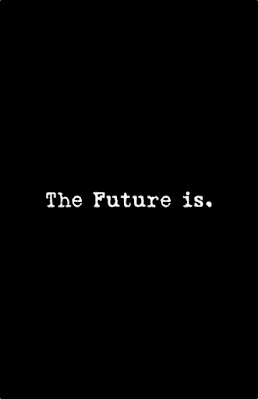Commissioned by Angie Frey and Alfie Taylor
 |
| Like a Kit-Kat bar! |
Dragon Ball DC (DBDC for short), as the name suggests, is a podcast series wherein the Dragon Ball and DC universes are merged together. The Entity Saga acts as the second arc for that series, riffing on a “collect the Dragon Balls” style arc with said balls being replaced by the entities that represent the various lantern corps from the Green Lantern mythos. In many regards, this highlights one of the fundamental failings of the series. As with many a crossover, there must be a balancing act between the two stories being explored. It is tempting to have one universe overwhelm the other. And, rather unfortunately, DBDC opts to ultimately align itself with the sensibilities of the DC Universe.
Sure, species like the Tuffles or the Saiyans appear within the narrative, but they ultimately function like any other alien race within the DC Universe. You wouldn’t expect, say, the Prime Minister of England to be a humanoid dog person. Or for there to be a communist movement led by a talking pig. Or for the moon to be secretly controlled by a Bunny Gangster. And sure, these are elements from the original Dragon Ball series and DBDC ultimately draws more from Dragon Ball Z than anything else. But it nevertheless highlights a degree of unwillingness to radically alter the DC Universe through to its merge with Dragon Ball.
But perhaps the core issue of the series is with regards to pacing. The Entity Saga runs at slightly under two hours and utilizes the narration format to deliver its story telling. However, the narrative being presented rarely, if ever, allows for things to slow down. Indeed, moments where the narrative could, in theory, slow down are glossed over in favor of getting to the next fight scene. I mean, they literally present us with the golden opportunity to have Wonder Woman debate Lex Luthor about the nature of humanity and where we should end up, and the writers regulate it to just two sentences.
The focus of the series, from this single arc, is largely on the fight scenes. A pity, then, that the prose utilized in the narration doesn’t fully express the sheer impact of the fights. More often than not, it feels like a Wiki article describing the moments (with occasional samplings of dialogue) than a depiction of the fights themselves in prose. One notable example comes from the confrontation with the Butcher, an entity that symbolizes rage. Over the course of two minutes, we have one of our lead characters possessed by the entity, fight the various people in the area, and be calmed down so as to no longer want to kill everyone in the room, friend and foe alike. In terms of prose, that’s roughly a single paragraph for what should be at least four or five (a failing that the satirical A Trekkie’s Tale ruthlessly mocked).
In the arc’s defense, it does get better by the climactic fight. The prose actually feels like that of a short story rather than a Wiki article. However, even there the emphasis on fighting ultimately consumes anything else, leaving the viewer more exhausted listening to the events unfold than anything else. It slowly becomes more and more tedious as the details focus upon the various punches, kicks, and ki blasts used against the baddie. What little character work done is lost to the sheer magnitude of this 30 minute fight scene with only one brief pause.
I’d be lying if I said I watched this in a single sitting. The story felt rather boring, even though it should be a rip roaring adventure story. The choices made feel like the most obvious ones possible. Of course the rage spirit is on the same world as Broly. Of course Batman gets possessed by Parallax, the fear bug that is STRONGER THAN GOD BUT NOT HAL JORDAN. Of course someone dies to inspire Super Saiyan (though the choice of who that is could lead to some interesting stories down the road). It feels like I’ve heard this story before, which is a major failing with a crossover narrative.
In the best of crossovers, the texts being crossed over highlight aspects of the other that wouldn’t be apparent on their own. They bring about the best within each other or work to contrast and critique the other. But most of all, they are stories that could not be told without the other. For all that it builds itself as a merging between these two worlds, not much needs to be done to make this a simple expy of the Saiyans within the DC Universe. There’s nothing inherently about this story that makes it need to be one with Saiyans other than the glee of getting to play with these toys. Though, such pleasures are often permissible within fan productions.
But as with many fan productions, it’s very much an amateur work. You can see the craft growing as the podcast progresses. Some of the actors get slightly better over time while others remain at a passable or mediocre. Fine tune the pacing (maybe restructure it a bit so we can get some character work interspersed with the more action heavy aspects of the plot), work on the descriptions, and for God’s sake, keep the visual component of the series consistent, and you could have something worthwhile.















